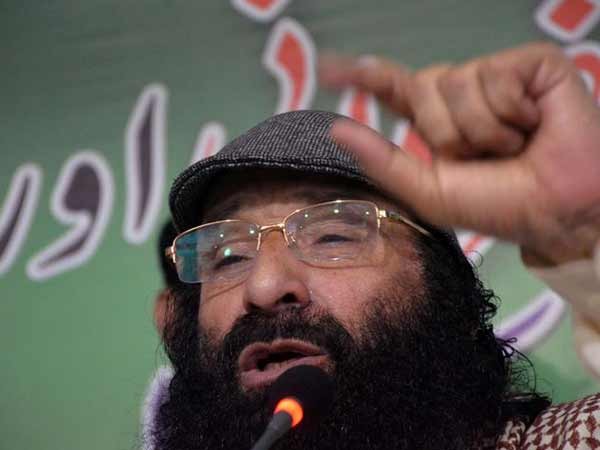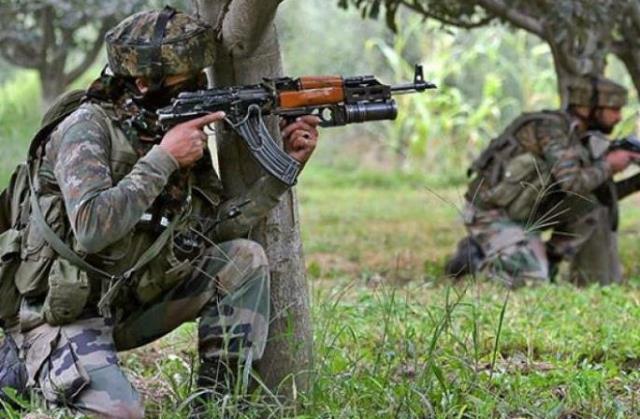Self-styled supreme commander of Hizbul Mujahideen, Syed Salahudeen, is guiding and instructing the cadres of the banned terror group as well as activists of United Jihad Council (UJC)– a conglomerate of around 13 Pakistan-based Kashmir centric terror outfits, National Investigation Agency (NIA) said.
As per the anti-terror agency, Salahudeen alias Mohammed Yusuf Shah has been guiding and instructing these activists of the UJC from Pakistan.
The Central probe agency said that Salahudeen is the chairman of the UJC which is also known as Muttahida Jihad Council (MJC)– an umbrella organisation of terror outfits such as Lashkar-e-Taiba and Jaish-e-Mohammed that operate out of Pakistan-occupied Kashmir.
The 77-year-old terrorist Salahudeen, who had fled to Pakistan in 1993, was designated as an individual terrorist by India in October 2020, said the NIA, adding “the designated terrorist continues to operate from Pakistan.”
The NIA made the revelation after its fresh action against Salahudeen’s two sons– Shahid Yusuf and Syed Ahmed Shakeel. Earlier on Monday, the agency attached two immovable properties of Yusuf and Shakeel that are located in Kashmir’s Soibugh area in Budgam district and Nursing Garh’s Mohalla Ram Bagh area in Srinagar district. The properties have been attached under section 33(1) of Unlawful Activities (Prevention) Act 1967.
Both Shahid Yusuf and Syed Ahmed Shakeel are lodged in Delhi’s Tihar Jail since their arrest in October 2017 and August 2018. They were chargesheeted on April 20, 2018, and November 20, 2018, respectively.
“Yusuf and Shakeel had been receiving funds from abroad from the associates of their father and overground workers of Hizbul Mujahideen,” said the NIA, adding “besides instigating and operationalising militant activities in India, primarily in Kashmir valley, Syed Salahudeen has been raising funds and routing finances to India through trade routes, Hawala channels, and international money transfer channels for furthering the terrorist activities of Hizbul Mujahideen cadres.”
The property attachment of Salahuddin’s sons is based on NIA’s investigation into a terror conspiracy case registered by the agency in 2011 naming Yusuf and Shakeel among other accused.
The NIA launched investigations in November 2011 into the criminal conspiracy to raise, collect and provide funds to commit terrorist acts and distribute funds among the terror groups and their sympathizers in Jammu and Kashmir for the purpose of committing terrorist acts.
The Special Cell of Delhi Police had initially registered a case in January 2011 and the NIA subsequently took over the case. Chargesheets as well as Supplementary Chargesheets were filed against eight accused in the case, including in 2011 and 2018.
In a money laundering probe related to terror funding case involving Salahudeen, the Enforcement Directorate has also alleged that Jammu Kashmir Affectees Relief Trust (JKART) was a front through which Hizbul Mujahideen received Rs 80 crore between 2004 and 2011 to carry out terror activities in India.
Salahuddin was declared a specially designated global terrorist by the US Department of State in June 2017 on charges that he “vowed to block any peaceful resolution to the Kashmir conflict, threatened to train more Kashmiri suicide bombers, and vowed to turn the Kashmir Valley into a graveyard for Indian forces. “
Born Mohammed Yusuf Shah, Salahudeen changed his name after taking over as head of the militant outfit in the late eighties. Hizbul Mujahideen is one of the several homegrown militant groups that have for decades been fighting for an independent Kashmir or a merger with Pakistan.
Prior to joining the Hizbul Mujahideen, Salahudeen unsuccessfully contested in the 1987 Jammu and Kashmir Assembly elections from the Amirakadal constituency. Salahudeen has been vocal in his anti-India stand. He has also time and again mentioned Pakistan’s role in the Kashmir unrest. (ANI)
Read More: http://13.232.95.176/

